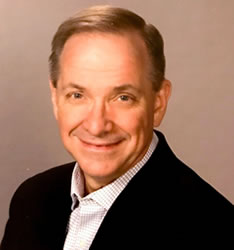4/8/2011· Elevators - Escalator - Automatic Doors
Choosing An Elevator Expert Witness
By: Ronald Creak
When choosing an expert witness, most people will agree it is vitally important to select the right one from the outset.
By: Peter J. Weller
President
Design Engineering Group
PO Box 2417
Redondo Beach, CA 90278-2315
Tel: (310) 937-9389
Email Mr. Peter J. Weller
Website: www.peterjweller.com
Introduction
An auto lift is a necessary tool in any automotive repair shop, whether the shop is a one-bay family business or a 30-bay shop in an auto dealership. Unfortunately, an auto lift can be a very dangerous tool because it is used to support a massive load above a work area. There are several common types of auto lifts used in repair shops: inground one and two post lifts, above ground two post lifts, and above ground four post lifts. Other variations are not as common in the United States but include side lifts and scissor lifts. Inground lifts can be further divided into low pressure lifts and high pressure lifts. These terms describe the fluid pressure levels used to extend the lift. This article is written about inground low pressure lifts.
Description of Lift
The advantages of an inground lift (and, especially a one post inground lift) are that it takes up very little space in the shop and it does not interfere with the mechanic�s ability to open the doors of the vehicle being lifted. This means that, in a small repair shop, the mechanic has more room to move around the vehicle when the lift is employed, and he has more work space in the shop when the inground lift is retracted to its stored position in the shop floor. In a large shop such as those in automotive dealerships, using inground lifts means that the dealer has room for more lifts and is able to increase his throughput of repairs, thus enhancing the profitability of his service business.
A low pressure lift is powered by the compressed air system in the shop, whereas a high pressure lift employs a dedicated hydraulic pump which provides high pressure hydraulic fluid to a hydraulic cylinder to raise the lift. The advantages of a low pressure lift over a high pressure lift are that the low pressure lift has fewer moving parts and it does not require a dedicated hydraulic system (pump, hoses, and lift cylinder). These advantages typically result in an installed savings per lift of several thousand dollars to the owner of the repair shop. The low pressure lift is able to provide comparable lifting force to the load because the effective cross-section area of the lift cylinder is larger than that of the hydraulic cylinder in a high pressure lift. (The lifting force supplied by the lift is equal to the fluid pressure in the lift cylinder multiplied by the area of the face of the moving piston in the lift.)
Two approaches have been taken by the industry to convert pressure from the shop air system to lifting force for the lift. In one, the shop air is plumbed to an external reservoir which is filled with hydraulic fluid. The reservoir is plumbed hydraulicly to the auto lift cylinder. When the shop air pressurizes the hydraulic fluid, the fluid becomes pressurized and applies force directly to the piston in the lift to raise the load on the lift. The other approach is more common in the author�s experience, and is illustrated in Figure 1. This section view shows the lift in a position representing almost full retraction to the floor level. The arms which contact the vehicle to be lifted and the plate ("bolster") which connects the rotating arms to the plunger are not shown, in order to keep this illustration simple. The lift contains hydraulic fluid, but the pressurized air is actually used to contact the working face of the plunger (piston) and to raise the load. The hydraulic fluid is used as a means of sealing the pneumatic pressure and of controlling the speed of the plunger through use of an orifice in the bottom of the plunger. . . . Continue to article and footnotes (PDF).
Peter J. Weller is President of Design Engineering Group in Redondo Beach, CA. He has a BS degree in Mechanical Engineering from Cornell University, and an MS degree in Mechanical Engineering from Stanford University. He is a registered PE (Mechanical) in California and has 40 years of experience in engineering design; manufacturing of auto lifts, truck bodies, and construction equipment; and as an expert witness.
©Copyright - All Rights Reserved
DO NOT REPRODUCE WITHOUT WRITTEN PERMISSION BY AUTHOR.

4/8/2011· Elevators - Escalator - Automatic Doors
Choosing An Elevator Expert Witness
By: Ronald Creak
When choosing an expert witness, most people will agree it is vitally important to select the right one from the outset.

5/21/2024· Elevators - Escalator - Automatic Doors
The Evolution Of Escalator And Auto-Walk Braking Systems
By: Anthony S. Boom
Ever since the very first escalator was installed, escalator manufacturers and safety code committees have worked proactively and reactively to make escalators as safe to ride as possible. Whether manufacturers and code committees were acting proactively or reactively, as time passed, many new safety devices and rules were implemented to make escalators and auto-walks safer to ride.

7/11/2024· Elevators - Escalator - Automatic Doors
Escalator Brake Failure Investigation
By: Anthony S. Boom
The following is a brief synopsis of a case where I was an expert witness, and which demonstrates that “accidents don’t just happen.” The case pertains to a down running escalator carrying a load of passengers. On one particular day, the escalator suddenly sped up to the point where many passengers could not exit the escalator without falling down.




